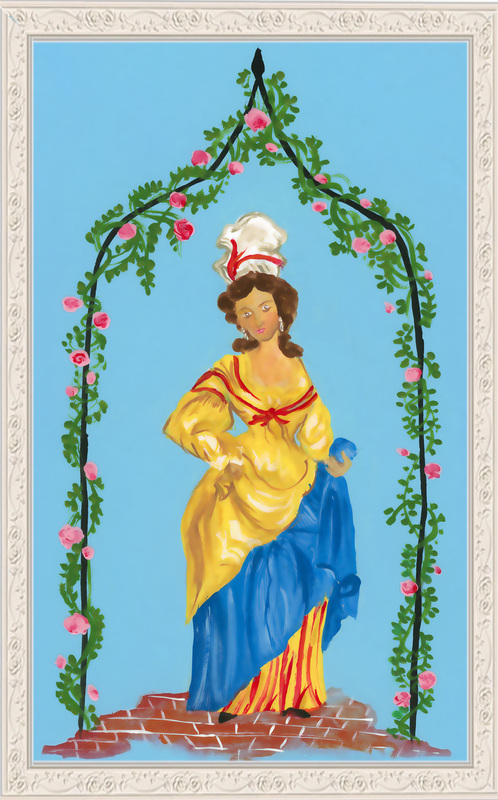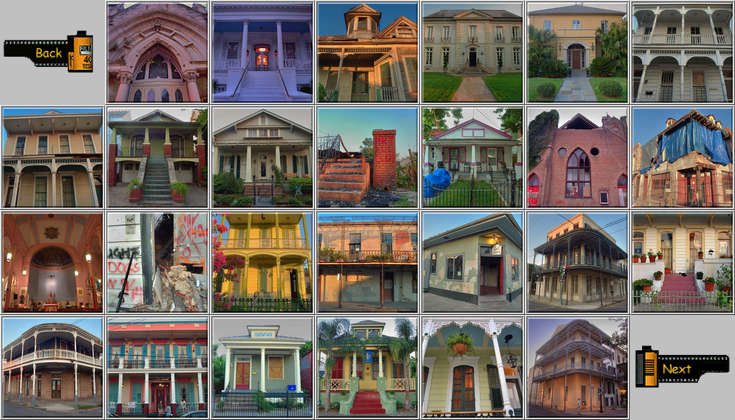
Good Morning POU!
We continue our series of looking at the lives of the placee in colonial Louisiana.

Common portray of Marie Louise Rochon. According to some stories, she not only African and French heritage but also Native American as well.
Rosette Rochon was born in 1767 in colonial Mobile, the daughter of Pierre Rochon, a shipbuilder from a Québécois family and his mulâtresse slave-consort Marianne, who bore him five other children. Once Rosette reached a suitable age, she became the consort of a Monsieur Hardy, with whom she relocated to the colony of Saint Domingue. During her sojourn there, Hardy may have died or relinquished his relationship with her; for in 1797 during the Haitian Revolution, she escaped to New Orleans, where she later became the placée of Joseph Forstal and Charles Populus, both wealthy white New Orleans Creoles.
Using the money she acquired from Forstal and Populus, Rochon came to speculate in real estate in the French Quarter; she eventually owned rental property, opened grocery stores, made loans, bought and sold mortgages, and owned and rented out (hired out) slaves. She also traveled extensively back and forth to Haiti, where her son by Hardy had become a government official in the new republic. Her social circle in New Orleans once included Marie Laveau, Jean Lafitte, and the free black contractors and real estate developers Jean-Louis Doliolle and his brother Joseph Doliolle.
In particular, Rochon became one of the earliest investors in the Faubourg Marigny neighborhood in New Orleans, acquiring her first lot from Bernard Xavier de Marigny de Mandéville in 1806. Bernard de Marigny, the white Creole speculator and politician, refused to sell the lots he was subdividing from his family plantation to anyone who spoke English. While this turned out to be a losing financial decision, Marigny felt more comfortable with the French-speaking, Catholic free people of color (having relatives, lovers, and even children on this side of the color line).

When two American developers approached Marigny about future commercial development of the city in the area of the Faubourg Marigny, he first agreed, and then reneged by instructing Madame Marigny to stay away from the notary office, thus effectively killing the deal; this was reportedly due to his notorious dislike of the American settlers who were considered uncouth parvenus. This act was seen as extremely bad faith on the part of Marigny, and not only ensured that housing development grew uptown instead of east of the city, but also affected both his finances and his political career: “Marigny was severely blamed by the rest of the Creole population for thus yielding to his anti-American prejudices. This feeling ultimately worked his political destruction. Thereafter he was not looked on as a safe leader, and when he became a candidate for the governorship, they refused to support him.” (ALL THE SIDE EYES TO THESE SELL OUT MUTHASUCKAS)
Strapped for cash, Marigny later sold his lots not only to his fellow white Creoles, but to French-speaking gens de couleur (free people of color) to whom he was also related through his half-sister, the businesswoman Eulalie Mandeville Macarty , thus helping to create a traditional enclave of the New Orleans Creoles of color. In fact Rosette Rochon lived next door to Eulalie and Eugene Macarty in the Marigny neighborhood.
Faubourg Marigny neighborhood

One of the cottages owned by Rosette Rochon in the Faubourg Marigny neighborhood. The cottage is being renovated and added to the National Historic Society’s registar.


Rochon died in 1863 at the age of 96, leaving behind an estate valued at $100,000 (today, an estate worth a million dollars).
